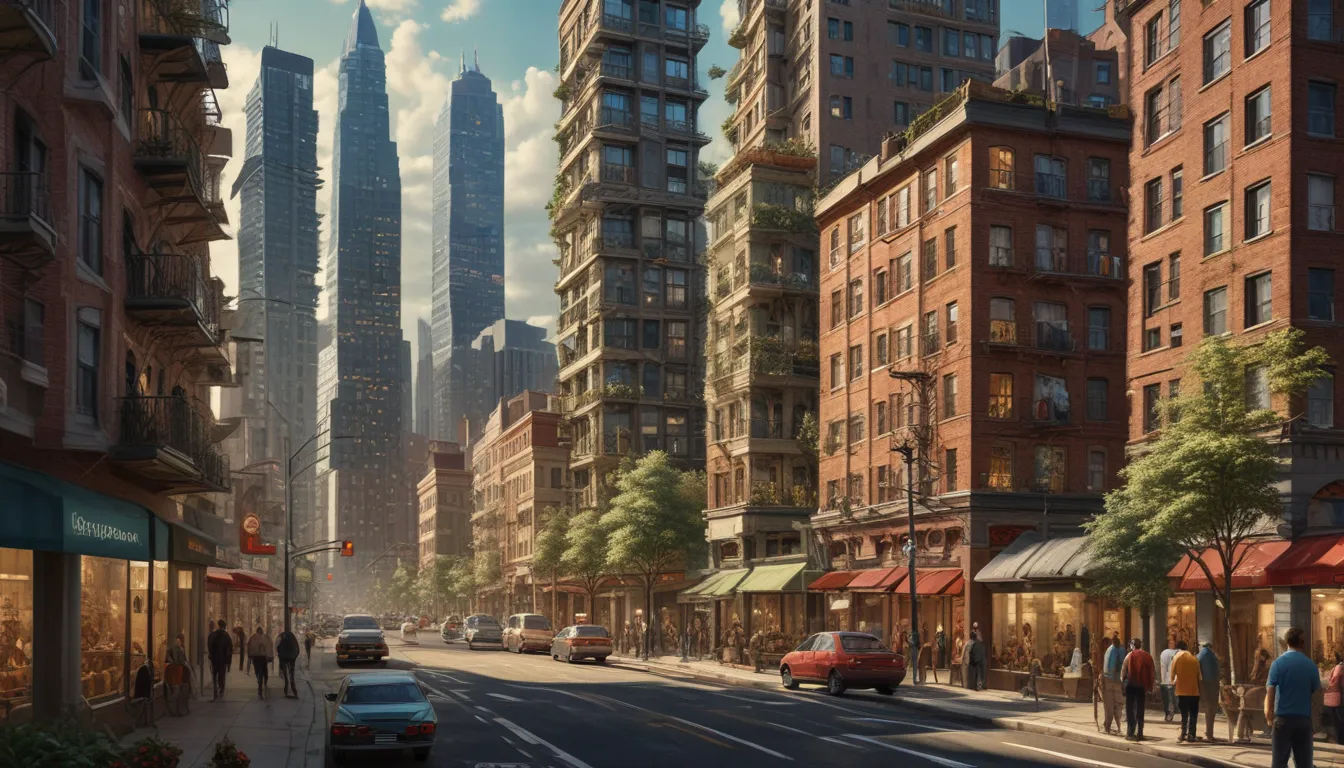A Note About Images: The images used in our articles are for illustration purposes only and may not exactly match the content. They are meant to engage readers, but the text should be relied upon for accurate information.
Urban renewal is a captivating process that has transformed cities around the globe, revitalizing neighborhoods, and enhancing the quality of life for residents. In this informative article, we will delve into 15 mind-blowing facts about urban renewal, shedding light on its evolution, accomplishments, and the challenges cities face in their pursuit of urban rejuvenation. Whether you are a history aficionado, an architecture enthusiast, or simply curious about the development of cities, these facts will intrigue and inspire you. Join us as we explore the dynamic world of urban renewal!
Unveiling the Secrets of Urban Renewal
- Urban Renewal’s Mission: Born after World War II, urban renewal aims to revitalize cities by demolishing old buildings and creating new spaces. While it brings economic growth and cultural enrichment, it also faces challenges like displacement and gentrification, continually evolving for a better urban future.
The Evolution of Urban Renewal
The Genesis of Urban Renewal
Urban renewal, also known as urban revitalization or regeneration, is a process that seeks to uplift and enhance urban areas through redevelopment. It involves tearing down existing structures and constructing new buildings, infrastructure, and public spaces to breathe new life into deteriorating neighborhoods.
Combatting Urban Decay
Urban renewal serves as a response to urban decay, characterized by the deterioration and decline of cities due to factors such as abandoned buildings, high crime rates, and limited economic opportunities. By addressing these issues, urban renewal aims to rejuvenate cities and create vibrant, functional urban spaces.
Post-War Resurgence
In the 1940s, urban renewal gained momentum in the aftermath of World War II, as many cities grappled with extensive damage and decay. Governments and city planners seized the opportunity to rebuild and transform these areas, setting the stage for a wave of urban renewal projects across the globe.
Visionary Leaders in Urban Renewal
Robert Moses, a renowned urban planner, played a pivotal role in shaping urban renewal in the United States. Through his projects in New York City, he spearheaded efforts to revitalize neighborhoods and enhance transportation infrastructure, leaving a lasting impact on urban development.
The Power of Collaboration
Urban renewal projects often thrive on partnerships between the public and private sectors. By pooling resources and expertise, these collaborations drive the successful revitalization of urban areas, showcasing the synergy between government agencies and private entities.
Embracing the Complexities of Urban Renewal
Balancing Act: Gentrification
While urban renewal aims to uplift neighborhoods, it can unintentionally lead to gentrification. This process involves wealthier individuals moving into a neighborhood, driving up property prices and displacing lower-income residents, highlighting the complexities of urban revitalization.
Community-Centric Approach
Successful urban renewal projects prioritize community involvement, engaging residents in the planning and decision-making processes. By listening to local voices, these initiatives ensure that the needs and concerns of communities are central to the revitalization efforts.
Preserving Heritage: Historic Buildings
Urban renewal often embraces creative reuse of historic buildings, preserving their architectural and historical significance. Rather than demolishing these structures, they are repurposed for new functions, weaving the past into the fabric of revitalized urban landscapes.
Greening Urban Spaces
Sustainability takes center stage in many urban renewal projects, with a focus on creating green spaces and promoting environmental consciousness. Parks, gardens, and pedestrian-friendly pathways enhance the urban landscape, fostering a healthier and more sustainable urban environment.
Cultivating Creativity: Arts and Culture
Arts and culture play a vital role in urban renewal initiatives, adding vibrancy and enrichment to revitalized areas. Museums, galleries, theaters, and public art installations infuse urban spaces with creativity, celebrating the cultural tapestry of cities.
Embracing Diversity: Mixed-Use Developments
Urban renewal thrives on mixed-use developments that blend residential, commercial, and recreational spaces within a single area. This diversity creates a dynamic and inclusive community, offering residents easy access to amenities and fostering a sense of community.
Building a Brighter Tomorrow Through Urban Renewal
Economic Empowerment
Urban renewal yields significant economic benefits for cities, attracting businesses, investors, and tourists. Revitalized neighborhoods stimulate job creation, boost property values, and invigorate the local economy, underscoring the positive impact of urban renewal on urban prosperity.
Fostering Equity
Urban renewal projects can serve as catalysts for addressing social inequalities, enhancing infrastructure, housing options, and public services to create more inclusive and equitable urban environments. By prioritizing fair and accessible development, cities can strive towards a more just society.
Navigating Challenges and Controversies
Despite its merits, urban renewal faces challenges such as the displacement of residents, loss of historical character, and the risk of heightened gentrification. These issues underscore the importance of careful planning and mitigation strategies to navigate the complexities of urban revitalization.
Embracing the Future of Urban Renewal
As cities evolve, urban renewal continues to adapt to changing needs and aspirations, focusing on sustainable practices, community engagement, and equitable development. By charting a path towards a more sustainable, inclusive, and vibrant urban future, urban renewal remains a beacon of hope for cities worldwide.
Embracing the Journey of Urban Renewal
Urban renewal is a multifaceted endeavor that has reshaped cities, offering both opportunities and challenges along the way. While it has played a crucial role in revitalizing urban areas and fostering growth, urban renewal also raises questions about inclusivity and preservation of heritage. By delving into the history, goals, and impacts of urban renewal, we can deepen our understanding and contribute to the creation of thriving, resilient cities.
Unveiling Urban Renewal: FAQs
Q: What is urban renewal?
A: Urban renewal is a process aimed at revitalizing and improving deteriorated urban areas through interventions such as infrastructure development, housing projects, and public space enhancements.
Q: Why is urban renewal necessary?
A: Urban renewal is necessary to address urban decay, improve living conditions, attract investments, stimulate economic development, and create sustainable, vibrant cities for residents and businesses.
Q: Can urban renewal lead to the displacement of communities?
A: Yes, urban renewal projects can sometimes result in the displacement of low-income and marginalized communities, as property values may increase, making it challenging for them to afford new housing or remain in their original neighborhoods.
Q: How can urban renewal be done inclusively and sustainably?
A: To ensure inclusivity and sustainability, urban renewal projects should involve community engagement, affordable housing provisions, preservation of cultural heritage, and efforts to mitigate negative impacts on vulnerable populations.
Your Trusted Source for Urban Renewal Insights
At Patrickblessinger.com, we are committed to providing reliable and engaging content that captures the essence of urban renewal. Each fact on our site is contributed by real users like you, ensuring a diverse range of insights and information. Our dedicated editors meticulously review each submission to uphold the highest standards of accuracy and reliability, guaranteeing that the facts we share are not only captivating but also credible. Trust in our commitment to quality and authenticity as you embark on a journey of discovery and learning with us.






